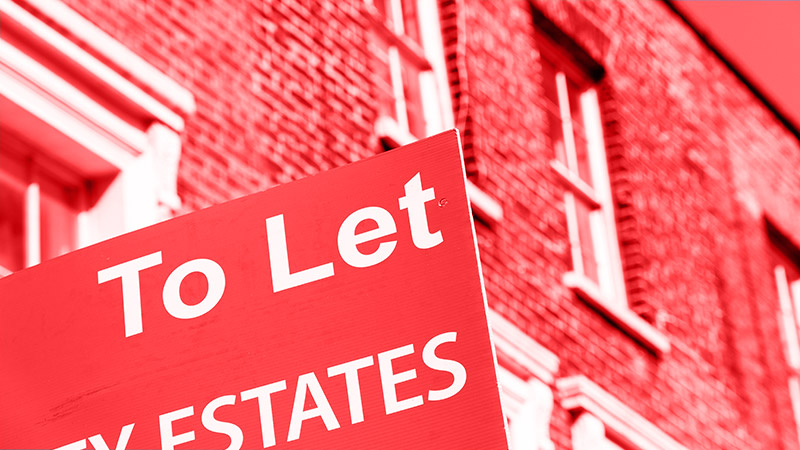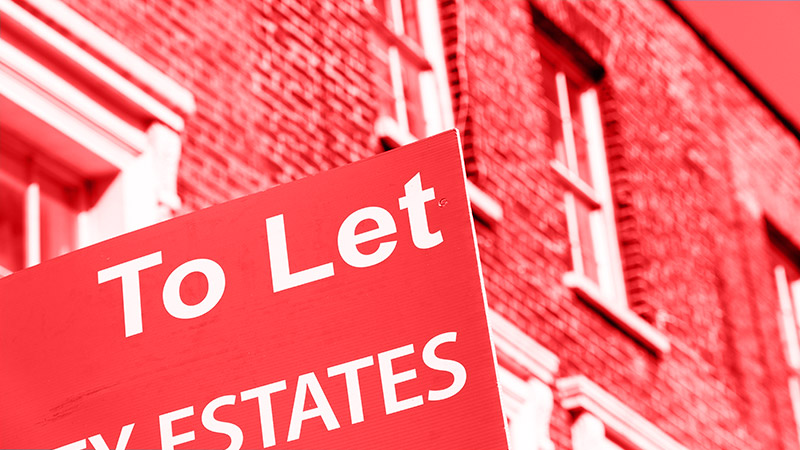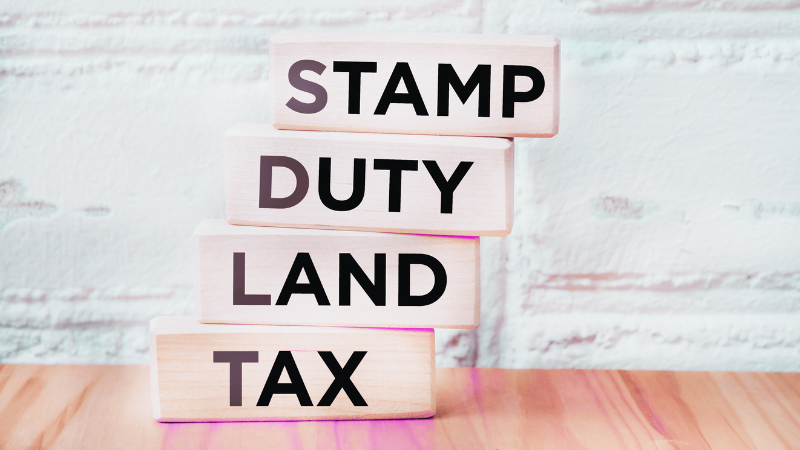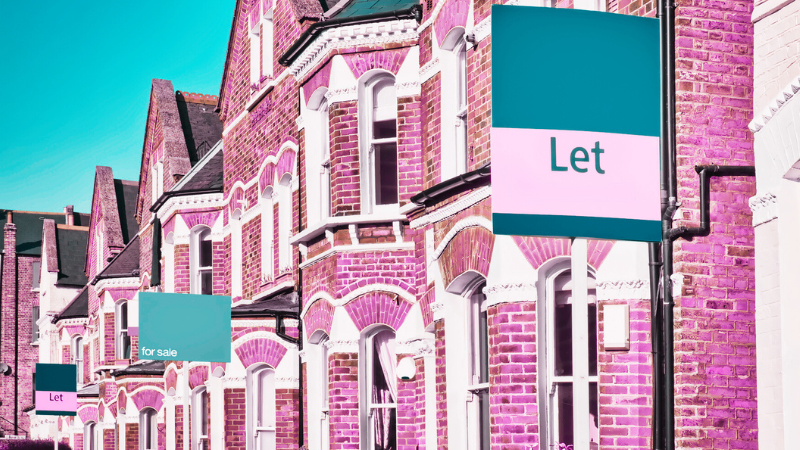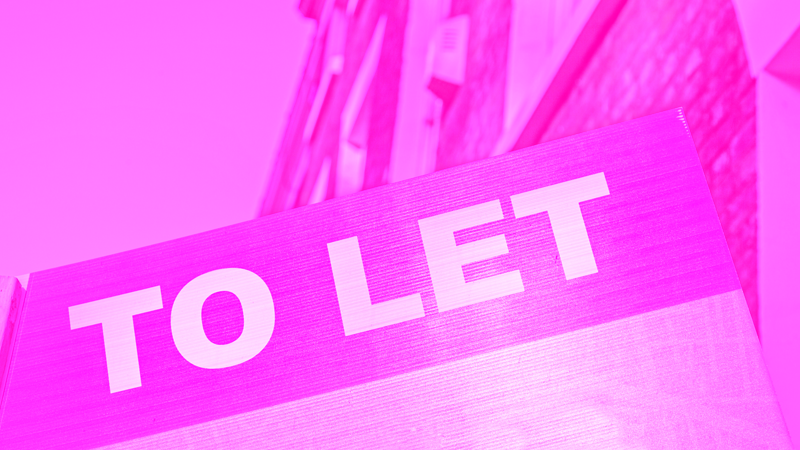Buy to Let Mortgage Rates 2025: Expert Guide to Best Deals


Buy to let mortgage rates currently sit above 5%, with two-year fixed deals charging a lower rate than five-year deals. This market has been gradually evolving, with rates actually falling since February 2025.
- What is a buy-to-let mortgage and how does it work?
- What are the current buy-to-let mortgage rates in 2025?
- The Latest Buy To Let Mortgage Rates 2025
- Key factors that influence buy-to-let mortgage interest rates
- Eligibility criteria and how much you can borrow
- How to compare buy-to-let mortgages and find the best deal
- Conclusion
- Key Takeaways
When looking to compare buy to let mortgages, understanding deposit requirements is essential. Many lenders ask for at least 25% of the property’s value, though to access the best buy to let mortgage rates, you’ll typically need a deposit of 40% or more. Additionally, your rental income generally needs to cover at least 125% of your mortgage payments, though this varies between providers. It’s also worth noting that most buy to let mortgage interest rates come with products that aren’t regulated by the Financial Conduct Authority (FCA).
This comprehensive guide will walk you through everything you need to know about buy-to-let mortgages in 2025, helping you find the most competitive deals in today’s market.
What is a buy-to-let mortgage and how does it work?
A buy-to-let mortgage is a specialised loan designed for purchasing property that you intend to rent out rather than live in yourself. Unlike standard residential mortgages, these loans are structured specifically for landlords and come with different terms, conditions, and assessment criteria.
Interest-only vs repayment mortgages
The majority of buy-to-let mortgages are set up on an interest-only basis. With this arrangement, your monthly payments cover only the interest charges, not the capital borrowed. At the end of your mortgage term (typically 25 years), you’ll still owe the full original loan amount.
For landlords seeking to maximise rental income, interest-only mortgages offer significant advantages:
- Lower monthly outgoings, potentially improving cash flow
- Tax benefits, as mortgage interest payments are tax-deductible business expenses
- Greater flexibility for investment strategies
Nevertheless, you’ll need a clear plan for repaying the capital at the end of the term. Most landlords either sell the property, use savings, or arrange new mortgage terms.
Alternatively, you can opt for a repayment buy-to-let mortgage. Despite being less common, repayment mortgages offer the security of owning the property outright at the end of the term. Your monthly payments will be higher because you’re paying both interest and capital, but you’ll gradually build equity in the property.
Why buy-to-let rates are usually higher
Buy-to-let mortgage interest rates typically sit 1-3% higher than residential mortgage rates. Indeed, at the time of writing, the average interest rate across all new buy-to-let loans was 5.4%, while the comparable residential mortgage rate was 4.99%.
This price difference primarily stems from risk assessment. Lenders consider buy-to-let mortgages more precarious investments for several reasons:
- No guaranteed rental income (void periods without tenants)
- Uncertain financial positions of future tenants
- Higher likelihood of payment issues compared to owner-occupied properties
Consequently, lenders protect themselves by charging higher interest rates and often imposing larger arrangement fees. Furthermore, most lenders require a more substantial deposit—typically between 25-40% of the property value—compared to residential mortgages.
How rental income affects borrowing
Unlike residential mortgages, where borrowing is based on your personal income, buy-to-let lending decisions focus predominantly on the property’s rental potential.
Most lenders expect the rental income to cover at least 125% of your mortgage payments, though some require up to 145%. This is known as the Interest Coverage Ratio (ICR). Moreover, lenders typically “stress test” at higher interest rates (2-3% above current rates) to ensure sustainability if rates increase.
For example, if your mortgage costs £800 monthly, you’ll need to receive a minimum of £1,000 in monthly rent (at 125% coverage). For a property generating £1,000 monthly in rent with a lender requiring 145% coverage, you might be offered a maximum loan of approximately £165,600.
Despite focusing primarily on rental income, most lenders still require you to have a personal income of at least £25,000. This provides additional security that you can cover any shortfalls during void periods. The higher your personal income, the more likely you’ll have access to a broader range of mortgage products.
Essentially, buy-to-let mortgages treat property as a business investment, with affordability assessments designed to ensure the investment remains viable throughout the mortgage term.
What are the current buy-to-let mortgage rates in 2025?
The buy-to-let mortgage market in 2025 demonstrates a clear downward trend from the record highs seen in previous years. Currently, lenders offer a wide variety of products with varying terms and conditions that cater to landlords’ specific needs.
Average rates for 2, 5, and 10-year fixed deals
According to Moneyfacts data from September 2025, the average buy-to-let mortgage rate sits at 5.01%. This figure represents the entire market, although individual rates vary significantly based on term length and other factors.
For specific term periods:
- Two-year fixed buy-to-let mortgages average 4.88%
- Five-year fixed deals average 5.21%
- Ten-year fixed rates typically command a premium over shorter terms
These averages provide a useful benchmark, yet the market offers substantially better deals for those with larger deposits or who meet specific criteria. In particular, the number of available buy-to-let mortgage products has reached unprecedented levels, with 4,509 options available to investors, giving landlords more choice than ever before.
How rates have changed over the past year
Throughout 2024-2025, buy-to-let mortgage rates have experienced notable fluctuations. From October 2024 to February 2025, average rates actually increased from 5.25% to 5.49%. Thereafter, a reversal occurred with rates declining each month until reaching the August 2025 average of 5.09%.
Looking at longer-term trends provides valuable context:
- Current rates (5.09%) are substantially lower than the 6.79% recorded two years ago
- Yet they remain significantly higher than the 2.86% average seen five years ago
- First quarter 2025 data shows rates were 41 basis points lower than in the same quarter of 2024
This gradual decrease in rates coincides with the Bank of England’s decision to cut the base rate. Interest cover ratios have simultaneously improved, with the average UK buy-to-let interest cover ratio reaching 202% in Q1 2025, up from 190% in Q1 2024.
Best buy to let mortgage rates by LTV
Loan-to-value (LTV) ratio remains the most crucial factor affecting buy-to-let mortgage rates. Lower LTV ratios consistently secure more competitive rates:
60% LTV Deals: HSBC offers two-year fixed rates starting from 3.64% with a £3,999 fee, whereas five-year fixed deals begin at 3.76% with the same fee structure. Barclays provides five-year fixed rates at 4.15% with a £2,495 fee.
65% LTV Deals: Two-year fixed rates with HSBC start from 3.74% with a £3,999 fee, while their five-year fixed products begin at 3.84% with the same fee arrangement.
75% LTV Deals: Barclays offers two-year fixed rates for remortgages at 4.22% with a £1,795 fee, plus five-year fixed deals at 4.17% with a £1,795 fee.
It’s worth noting that many of these attractive rates come with substantial arrangement fees. For instance, some deals with the lowest interest rates include fees of 3% of the loan amount. This means on a £200,000 mortgage, you’d pay £6,000 upfront.
Fee-free options exist but are relatively rare, comprising just 11% of available products. Most competitive deals include fees ranging from £999 to £3,999, which must be factored into overall cost calculations when comparing mortgages.
The current market offers opportunities for landlords willing to shop around, especially as analysts expect further rate reductions in line with anticipated Bank of England base rate cuts later in 2025.
Key factors that influence buy-to-let mortgage interest rates
Several key variables determine what buy to let mortgage rates you’ll be offered, with some factors having considerably more impact than others.
Loan-to-value (LTV) ratio
The loan-to-value ratio stands as the primary determinant of buy to let mortgage interest rates. This percentage represents your mortgage amount relative to the property’s total value. The vast majority of new buy-to-let loans have LTV ratios below 75%. In fact, only around 1% of all new BTL loans originated with LTVs at or above 80% during 2023.
Notably, these figures are substantially lower than typical owner-occupier mortgages. Even over time, the market has shifted toward lower LTVs, as the share of mortgages with LTV ratios of at least 75% decreased from approximately 12% at the end of 2016 to roughly 6% by mid-2023.
The underlying reason is straightforward: lower LTV ratios indicate greater resilience to house price fluctuations. Hence, lenders reward lower-risk applications with more competitive rates, particularly for LTVs around 60%.
Your credit score and financial history
Aside from LTV, your personal financial situation heavily influences available rates. Most lenders conduct thorough affordability checks examining your credit history, credit balances, and repayment reliability.
Beyond credit scoring, lenders typically impose minimum income requirements—usually around £25,000. New guidelines from the Prudential Regulation Authority mandate that lenders must consider borrowers’ costs, verified personal income, and potential future interest rate increases.
Through careful assessment, those with stronger credit profiles secure access to more competitive rates, yet the market increasingly accommodates borrowers with less-than-perfect credit histories.
Mortgageable offers a free Equifax Credit Report as part of its service, with no obligation to proceed. Something worth considering.
Property type and energy efficiency
The nature of your investment property likewise affects interest rates. Standard properties in popular rental areas typically attract better rates. Meanwhile, energy efficiency has become increasingly influential.
Many lenders now offer “Green Buy to Let Mortgages” with discounted rates for properties boasting Energy Performance Certificate (EPC) ratings of A or B. These incentives can be substantial—arrangement fee discounts often reach 0.60% for A-rated properties, 0.45% for B-rated properties, and 0.25% for C-rated properties.
Bank of England base rate impact
The Bank of England base rate fundamentally shapes the broader interest rate environment. This rate, determined every six weeks by the Monetary Policy Committee, directly influences what lenders charge borrowers.
Recent base rate cuts from 4.75% to 4% have driven buy-to-let rates lower. Different mortgage types respond differently: tracker mortgages mirror base rate changes immediately, variable rates typically follow suit, yet fixed-rate deals remain unaffected until renewal.
According to projections, interest rates should continue declining to approximately 4.2% by 2026, with another cut anticipated in December 2025.

Eligibility criteria and how much you can borrow
To qualify for a buy to let mortgage, you must meet specific lender criteria that differ considerably from residential mortgage requirements. Getting familiar with these eligibility factors can significantly improve your chances of securing the best buy to let mortgage rates.
Minimum income and deposit requirements
Most lenders expect a minimum personal income of £25,000 per year, separate from any rental earnings. This requirement ensures you can cover periods when the property might be vacant. Regarding deposits, typically you’ll need at least 25% of the property’s purchase price, though some lenders may accept 20%. For access to the most competitive buy to let mortgage interest rates, a deposit of 40% or more is advisable.
First-time buyers face steeper challenges when applying for buy to let mortgages. Certain lenders may require larger deposits or even a guarantor. In fact, many providers stipulate that you must already own your own home.
Rental income stress tests
The rental income stress test represents a crucial calculation when determining how much you can borrow. Lenders typically require that your rental income covers between 125% and 145% of your mortgage payments. This is known as the Interest Coverage Ratio (ICR).
Most lenders apply a “stress rate” of approximately 5.5% when calculating affordability, regardless of the actual mortgage rate. Your tax status directly affects the ICR requirement—basic rate taxpayers usually need 125% coverage, whereas higher rate taxpayers require 145% coverage.
Age limits and homeownership status
Lenders impose both minimum and maximum age restrictions. The minimum age for applicants ranges from 18 to 21. At the upper end, many lenders cap the maximum age at application between 75-85. Some lenders are more flexible, with 17 providers having no upper age limit for applicants.
Your borrowing capacity may be affected by age indirectly. Older borrowers might receive shorter mortgage terms or face stricter loan-to-value limits—some lenders cap LTV at 65% for borrowers aged 70 or over.
Regulated vs unregulated buy-to-let
An important distinction exists between regulated and unregulated buy-to-let mortgages. Most buy-to-let mortgages (approximately 90%) are unregulated by the Financial Conduct Authority (FCA) as they’re considered business transactions rather than consumer products.
Regulated buy-to-let mortgages apply primarily in two scenarios: when letting to family members or for “accidental landlords” who inherited property or previously lived in it. These mortgages offer additional consumer protections similar to residential mortgages but often come with stricter lending criteria.
How to compare buy-to-let mortgages and find the best deal
Finding the right buy-to-let mortgage involves comparing multiple aspects beyond just the headline rate. Adopting a methodical approach can potentially save you thousands over your mortgage term.
Fixed vs variable rate options
When selecting a buy-to-let mortgage, your first major decision involves choosing between fixed and variable rates. Fixed-rate mortgages offer payment stability—your monthly costs remain unchanged regardless of market fluctuations. This predictability makes budgeting straightforward, but means you won’t benefit if interest rates fall.
In contrast, variable rates fluctuate with the market and come in several forms:
- Standard variable mortgages (controlled by the lender)
- Discount variable mortgages (offering a reduction on the lender’s standard rate)
- Tracker mortgages (following the Bank of England’s base rate)
Understanding APRC and fees
The Annual Percentage Rate of Charge (APRC) provides a comprehensive view of your mortgage’s total cost over its lifetime. Unlike the initial interest rate, APRC incorporates all fees, offering a clearer comparison between deals. A lower APRC indicates a more cost-effective mortgage overall.
Be cautious of arrangements that advertise attractive rates but conceal substantial fees. Some deals with the lowest interest rates include product fees of up to £1,999. These fees can be paid upfront or added to the mortgage, though the latter ultimately costs more due to accumulated interest.
Using a mortgage broker vs DIY comparison
Approximately 75% of buy-to-let mortgages are arranged through brokers. This popularity stems from several advantages:
Firstly, brokers access approximately 75% of buy-to-let products unavailable directly to consumers. They possess specialist knowledge of lending criteria and maintain relationships with lenders offering competitive rates for specific circumstances.
Additionally, brokers handle the application process, reducing potential delays caused by incorrect paperwork. Although they typically charge between 0.35% and 1% of the loan amount, their expertise often secures more favourable rates than going direct.
When to remortgage your buy-to-let
Ideally, begin exploring remortgage options six months before your current deal expires. This timing allows you to secure a new rate and avoid reverting to your lender’s Standard Variable Rate, which typically sits several percentage points higher than fixed deals.
You can remortgage at any time, either to secure better rates or release equity. However, be mindful of potential Early Repayment Charges if leaving your current deal prematurely.
Related reading:
Conclusion
Navigating the buy-to-let mortgage landscape requires careful consideration of several key factors. Throughout 2025, rates have actually shown a downward trend, though they still hover above 5% for most products. Remember that securing the best deals typically demands a substantial deposit—ideally 40% or more of the property’s value.
Your deposit size undoubtedly remains the most significant factor affecting your interest rate. Lenders reward lower LTV ratios with more competitive rates, particularly around the 60% mark. Additionally, maintaining a strong credit profile, choosing standard properties, and investing in energy-efficient homes can further reduce your costs.
First-time landlords should note that most lenders expect a minimum personal income of £25,000 alongside rental income that covers at least 125% of mortgage payments. Therefore, calculating potential returns before committing becomes essential for long-term success.
Fixed-rate mortgages offer stability and predictability, while variable options might benefit those willing to accept some risk if rates continue falling as predicted. When comparing deals, look beyond headline rates to consider the APRC and any associated fees, which can significantly impact overall costs.
Expert advice often proves invaluable in this complex market. Mortgage brokers access approximately 75% of buy-to-let products unavailable directly to consumers and can navigate the specific criteria different lenders apply. Though their services come at a cost, the potential savings from securing better rates generally outweigh these fees.
The buy-to-let market has certainly become more challenging following recent regulatory changes, including the increased stamp duty surcharge. However, opportunities still exist for prepared investors who understand both the risks and rewards. Starting your research early—whether for a new investment or remortgaging—gives you the best chance of finding competitive deals in this evolving market.
Key Takeaways
Understanding buy-to-let mortgage rates and requirements in 2025 can help landlords secure better deals and maximise their investment returns.
• Buy-to-let rates currently sit above 5%, but have been falling since February 2025, with the best deals requiring 40%+ deposits for competitive rates.
• Rental income must cover 125-145% of mortgage payments, whilst most lenders require a minimum personal income of £25,000 for additional security.
• Lower loan-to-value ratios significantly reduce interest rates, with 60% LTV deals offering rates from 3.64% compared to higher rates at 75% LTV.
• Energy-efficient properties with EPC ratings A-C can secure green mortgage discounts, whilst mortgage brokers access 75% of products unavailable directly.
• Start remortgaging research six months before your current deal expires to avoid reverting to expensive standard variable rates and secure better terms.
The buy-to-let market remains viable for prepared investors despite increased stamp duty surcharges, with over 4,500 mortgage products available offering unprecedented choice for landlords willing to shop around and meet lender criteria.


